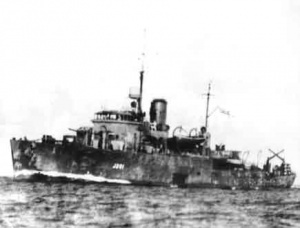HMAS Geelong was one of 60 Australian minesweepers (commonly known as corvettes) built during the Second World War in Australian shipyards as part of the Commonwealth government’s wartime shipbuilding program. Twenty were built on Admiralty order but crewed and commissioned by the Royal Australian Navy (RAN). Thirty-six (including Geelong) were built for the RAN and 4 for the Royal Indian Navy.
HMAS Geelong was laid down at Melbourne Harbour Trust, Williamstown, Melbourne, Victoria on 16 October 1940. It was launched on 22 April 1941 by Lady Dugan, wife of the governor of Victoria, and was the first RAN warship to carry the name of the port city located on Corio Bay and the Barwon River, in the state of Victoria. Geelong is 75km south-west of the state capital, Melbourne and is the second largest Victorian city.
HMAS Geelong commissioned at Melbourne on 16 January 1942 under the command of Lieutenant Colin G Hill MBE RANR(S).
After commissioning Geelong proceeded to its namesake city the following day for a one-day visit, after which it commenced its trials and working up exercises.
Operational war service began with a brief period of minesweeping and anti-submarine duty on the Australian east coast. On 8 March 1942 Geelong departed from Brisbane for New Caledonia where it served on anti-submarine duties in the Noumea area until May 1942. In June 1942 it began a period of convoy escort duty between Sydney and Queensland ports which lasted until January 1944, when it proceeded to Adelaide for a refit which lasted until March 1944.



